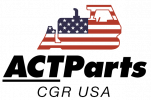There are many different types of heavy equipment and with each one being unique it can be hard to know where to start when creating a maintenance plan for them. However, having a clear procedure to follow is a necessity to ensure the health and longevity of your heavy equipment. It will be less expensive to do regular maintenance on your equipment than to repair and replace your machinery. Follow this maintenance plan that can be applied to all types of heavy equipment and protect your machinery and your budget.
Start Small with One Piece of Equipment
No matter how many types of heavy equipment you own, the idea of conducting regular maintenance on all of them can be overwhelming. Having a maintenance plan will break this process down into simple steps you and your team can easily follow. The first thing you must do is choose just one piece of heavy equipment to start working on.
Don’t pick any machine though, pick one that’s a representative of your fleet. If your stock works well as a whole, pick a piece of equipment that’s in good shape. If your heavy equipment breaks down on a regular basis, pick a machine that has a high failure rate. If you pick a piece of equipment that performs differently from the rest of your fleet, you won’t get as good of a ROI for your time since you won’t be able to apply your learnings to all of your machines.
Research Equipment and Establish a Baseline for Operation
Now that you have decided which piece of equipment you will work with first, it’s time to learn all you can about it. First, consult the original equipment manufacturer’s (OEM) instructions, regulatory standards, and suggested maintenance intervals. Every type of heavy equipment will also have a list of recommended maintenance tasks created by the OEM, so you won’t have to create your plan entirely from scratch. While these recommendations should be at the center of your maintenance plan, they are not the only tasks you should perform on your equipment.
Talk to your operators as they likely know the machine the best. Ask them for a summary of how the machine operates and find out if they’ve noticed any performance issues. Next, you’ll want to ask your current maintenance crew about any frequent problems, parts that need constant replacement, or specific maintenance tasks that need more time and attention than others. This will help you develop an upkeep plan for each piece of equipment. Having this historical data will show you what maintenance you are most likely to perform in the future so you can prepare for it now.
Stock Up on Supplies
The point of a maintenance plan is to be ready for any equipment failures or issues that may arise. To do this, you must also stock up on necessary inventory. This includes replacement parts, lubricants, coolants, cleaners, degreasers, safety gear, and tools for basic maintenance. Without having these items close at hand you risk excessive downtime, further damage, and wasted money. Stock up your inventory or have a third-party supplier who can get you the parts you need fast like ACTParts. Replacing parts is a big factor in preventative maintenance. Actively taking care of your equipment prolongs its life and is much less expensive than having to replace an entire machine.
Implement a Management System
Creating a sustainable maintenance plan for the different types of heavy equipment you own requires time and effort. But you don’t have to make and implement this plan all on your own. This is where having a fleet management system comes in. This computerized maintenance management system (CMMS) can easily collect and organize data needed for all your equipment and schedule maintenance tasks.
All the crucial information needed to optimize your equipment will be right at your fingertips. Certified personnel will be able to access important data before they begin to work on any of the machines and update maintenance records, so the files are always current. With all this knowledge at your disposal you have the power to act quickly and accurately.
Create a Maintenance Schedule
Whether you let the CMMS of your choice create a maintenance schedule or do it yourself, it’s important to know what one should look like. This way you can doublecheck the computer-generated schedule or make your own. Regular maintenance schedules will typically have dates stating when daily tasks such as checking for leaks or testing the brakes and preventative tasks like performing oil changes or checking hydraulic filters should be done.
Each maintenance schedule will be different depending on the type of equipment, how long it’s been in use, environmental factors, and how hard the machine has been used. To make this process easier, check to see if your piece of equipment has condition-monitoring sensors installed. These will tell you the pressure, temperature, and vibration readings of the machine which will affect your routine maintenance actions.
Monitor and Adjust Your Maintenance Plan
All types of heavy equipment need an efficient maintenance plan. But in order for this plan to stay effective and keep up with changing technology, it needs to be continuously monitored for areas of improvement. Afterall, the goal of a maintenance plan is to ensure your equipment is performing well. So, if something in your current maintenance plan isn’t working, go ahead and change it to align with your machine’s needs. In doing so, you ensure your maintenance plan and equipment run smoothly.
Ready to Keep Your Heavy Equipment in Peak Condition?
No matter how many different types of heavy equipment you use, you must have a comprehensive maintenance plan for all of them. This ensures you stay productive and prepared no matter what happens to your machines. After establishing a baseline of operation for one piece of equipment you can stock up on replacement parts and repair tools to be ready for anything. And don’t forget to use a computer maintenance management system to instantly set up routine maintenance schedules for all your equipment and change it as needed.
A maintenance plan is meant to prolong the life of your heavy equipment, but sometimes parts need to be replaced. ACTParts has a wide inventory of aftermarket heavy equipment parts for you to pick from. Contact us to order the parts you need and ensure the longevity of your machines today.



